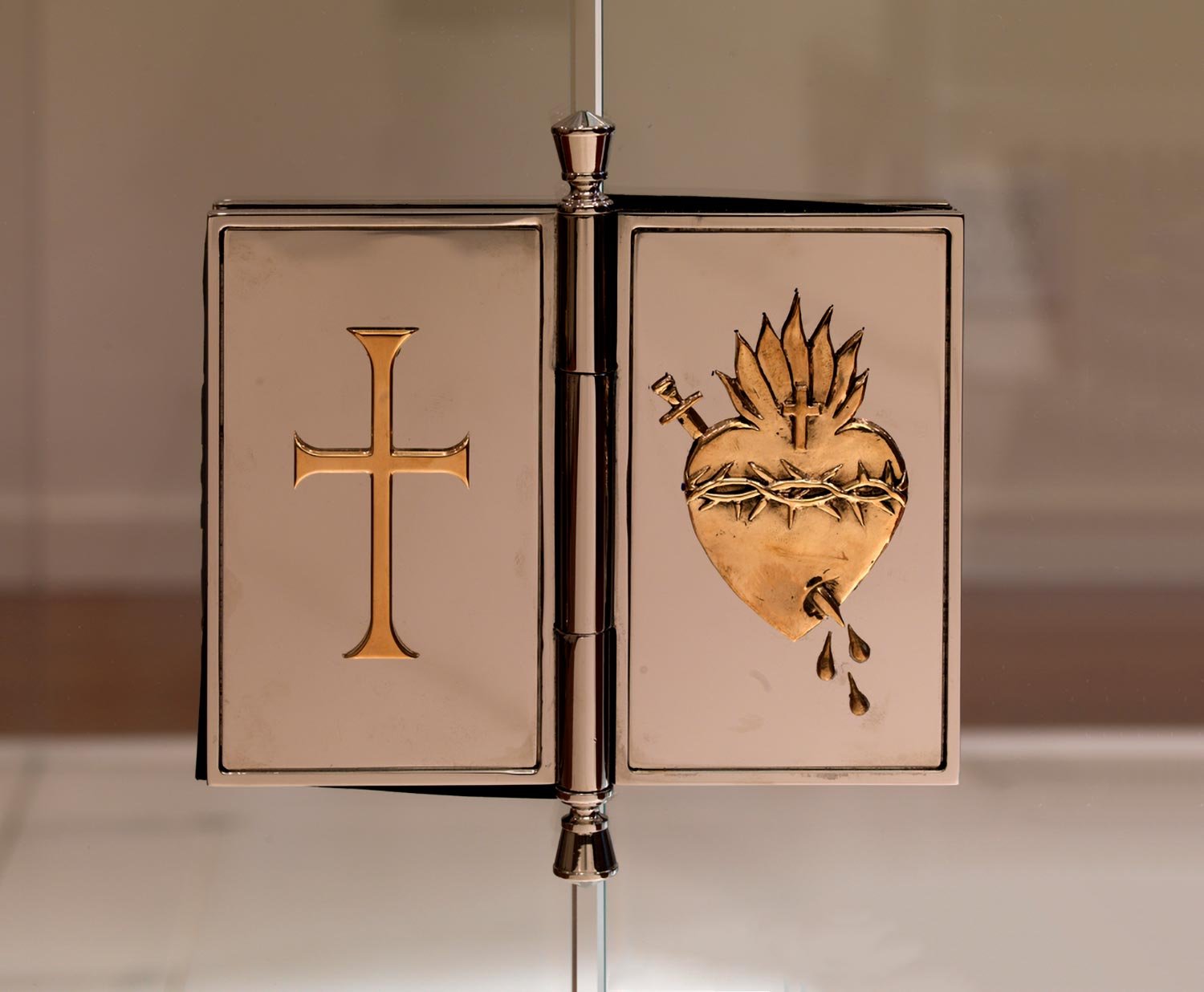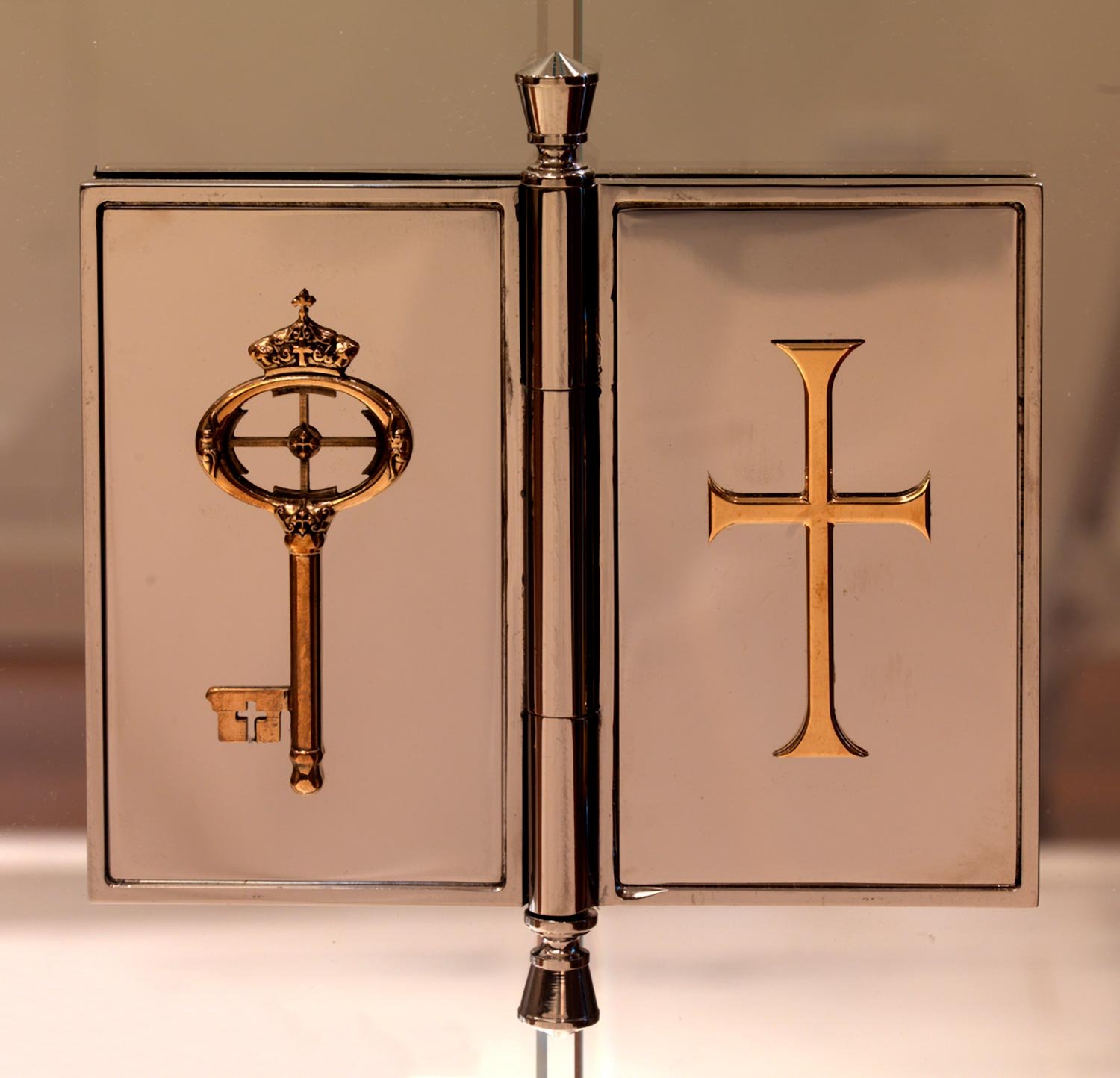Writings About Confess
The Artist’s Work in Troubled Times
by Karen Rapp
“Confess” is a multi-part art installation by Los Angeles-based artist Trina McKillen. McKillen’s artwork embodies our contemporary moment in the language of speaking truth to power. The exhibition’s title is a directive—the word “confess” asks for an admission of wrongness. In Confess, the artist skillfully and courageously identifies wrongdoings committed by the Catholic Church and proposes a profound call for change.
Like many people around the world, McKillen has been grappling for many years with the global crisis of sexual abuse committed and covered-up by Catholic clerics. Over the last decade, the artist has channeled her feelings of outrage and grief into the creation of artwork that gives voice and visibility to the survivors of abuse, especially children. Empathizing with the devastation this abuse has wreaked on individuals and their families and aggravated by the fact that the current international debate has lost sight of the victims of these crimes, McKillen’s artwork brings attention to survivors of abuse to ensure that their healing remains a priority and that their stories are not forgotten.
As her artist’s biography details, McKillen is a native of Belfast, Northern Ireland, and relocated to Dublin, Ireland, as a child when her Irish Catholic family was targeted and threatened during the intense sectarian conflicts known as “The Troubles.” Her Belfast upbringing certainly has left an indelible mark. When she describes her early life, she equates her daily walk from school with being in a war zone; the psychic effects of growing up in a neighborhood under siege is unfathomable.
As she began experimenting in the medium of photography in the 1990s, she translated her work as a set designer into the construction of narratives, or scenes, often imbued with childhood angst. Using miniature props and dolls, the 1998 photograph entitled “Girl Lifted” illustrates her approach to making tightly cropped images of children that convey a sense of helplessness. Although not yet addressing the front-page news of the clerical sexual abuse crisis that would consume her attention several years later, these early images offer perspective on McKillen’s persistent concerns for children and their vulnerability.
One of the challenges about artwork that deals with specific political issues and concerns is how to strike a balance between the exploration and presentation of the issues while not allowing the work to be a mere illustration of a particular agenda. McKillen’s breathtaking installation of a to-scale, translucent glass confessional, “Bless Me Child For I Have Sinned”, is a triumphant balance struck between aesthetics and message. Both pursuits—the rendering of aesthetic choices and the summoning of her voice to convey her own outrage at the practices of the Church—required time, research, and reflection.
McKillen has knowingly employed the narrative levels and powerful symbols of Catholicism to communicate her points of view. Renderings of the Sacred Heart, a lamb, cross, key to heaven, and serpent obstructing a keyhole, are featured elements on the door hinges of “Bless Me Child For I Have Sinned”.
The word pairings “shame” and “betrayal,” and “silence” and “sin,” appear on either side of its door handles. One challenge for the artist has been how to create her own representation of the sacrament of confession that would elicit an affective reaction in the viewer with the same amount of wonder and splendor as the accoutrements of the Catholic Church. The other equally important concern was her commitment to pay respect to the child victims of clerical abuse by making every aesthetic decision a conscious means by which to honor the children.



Photo: Wearecontents

The truth that this artwork speaks about the abuse of power, though, may be even more attention-grabbing than its reflective surfaces. McKillen set out from the beginning to reverse the roles of priest and penitent in this reimagined configuration. In her version of the Sacrament of Reconciliation, the Church must kneel as the confessor—on a literal bed of nails—and seek forgiveness from the child. McKillen seeks to rectify the great harm experienced by an unknowable number of children by inverting a centuries-old dynamic of power. “Bless Me Child For I Have Sinned” explicitly denounces the misdeeds of the church—its secrecy and cover-ups—while simultaneously announcing a desperately-needed, forward-looking call for the Catholic Church to become more transparent, accountable, and finally, to ask its victims for forgiveness.
“The Children” is the most recent body of work in “Confess” and perhaps its most emotionally filled. It was conceived by the artist as a response to the persistent lack of attention being paid by the media and the Church to individuals who have been victimized. Becoming emotionally close to adult survivors of childhood abuse made McKillen acutely aware of the lifetime of suffering these people, as well as their families, endure.

"The Children" at Laband Art Gallery, Loyola Marymount University. Photo: Rubin Diaz
“The Children” expresses devotion, innocence, and vulnerability—we can’t help but imagine the tender stories personified by this crowd of small disembodied beings who appear ready, perhaps waiting in the sacristy, to perform their religious duties. McKillen employs scale and proportion to great effect by positioning all of the garments at a child’s height, thereby seizing our attention and making us aware of our own adult presence and power. “The Children” shares the potency of repetition and scale with the late artist Chris Burden’s artwork “Uniform”, an installation Burden created in rapid response to the 1992 Los Angeles riots. In “Uniform”, thirty larger-than-life police uniforms are hung in the formation of an imposing line-up that triggers a palpable sense of smallness and vulnerability in the passerby. Both artists’ installations confront abuses of power in their arrangement of familiar forms to intentionally cause us discomfort and to question positions of the powerless.
One particular symbol—the image of a serpent obstructing a keyhole—is a significant motif that appears in multiple media across McKillen’s oeuvre. This particular symbol is one of the artist’s own creation. It appears on the chest of every one of the children’s garments. Just as each story of abuse is unique to each individual, each snake’s gold leaf pattern is uniquely designed. In the artist’s visual vocabulary, the keyhole represents the entrance to Heaven and the snake symbolizes the sexual abuse of children committed and covered-up by clerics in the Catholic Church. By positioning the snake to block the keyhole, the artist implicates the corruption of the reputed gatekeepers of Heaven. As is the case with millions of others, McKillen is awaiting their response.










